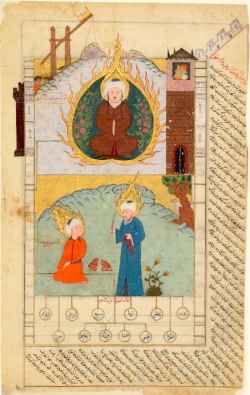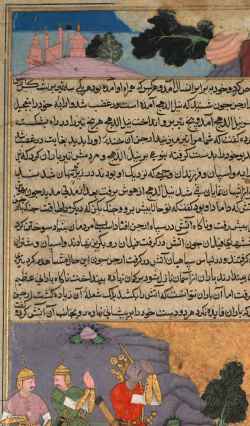Editor: Chiara Petrolini
The Sacrifice of Isaac
Boston, The Harvard Art Museums
Yom Kippur in the Apocalyptic imaginaire and the Roots of Jesus' High Priesthood: Yom Kippur in Zechariah 3, 1 Enoch 10, 11 QMelkizedeq, Hebrews and the Apocalypse of Abraham 13
in: Transformations of the Inner Self in Ancient Religions, pp. 349-366
Leiden: Brill, 1999.
The Christian Exegesis of the Scapegoat between Jews and Pagans
in: Sacrifice in religious experience, pp. 207-232
Leiden: Brill, 2002.
An Unusual Group of Hero Stones: Commemorating Self-Sacrifice at Mallam, Andhra Pradesh
in: Ars Orientalis, v. 44 (), issue -: pp.61-84.
Jewish Dogs An Image and Its Interpreters
Stanford: Stanford University Press, 2006.
The Jewish Dog and Shehitah
in: Interfaces: A Journal of Medieval European Literatures, v. 5 (2018), issue -: pp.175-193.
On the comparison of blood in Greek and Israelite ritual
in: Hesed ve-Emet: Studies in Honor of Ernest S. Frerichs, pp. 179-188
Atlanta: Scholars Press, 1998.
in: Das Blut im Glauben und Aberglauben der Menschheit. Mit besonderer Berück-sichtigung der ‘Volksmedizin’ und des ‘jüdischen Blutritus’, pp.
Munich: -, 1900.
The Jew and Human Sacrifice: Human Blood and Jewish Ritual
London: Cope & Fenwick, 1909.
Unearthly Powers Religious and Political Change in World History
Cambridge: Cambridge University Press, 2019.
John Selden et les origines de l’orientalisme
in: John Selden: juriste européen, pp. 1-11
Paris: Annuaire de l’Institut Michel Villey, 2012.
Sacrifice and Martyrdom in the Roman Empire
in: Archivio Di Filosofia [Special issue: Il sacrificio], v. 76 (2008), issue 1: pp.145-154.
2. Sacrifice and religion: Comparisons, Antiquarians, Anthropology (16th-18th Century) 3. Sacrifice and politics (16th-18th Century)
Mass human sacrifice and symbolism of the Feathered Serpent Pyramid in Teotihuacan, Mexico
Tempe: Arizona State University Anthropological Research Papers, 1995.
The sacrifice of Isaac. The Prophet Ibrahim (Abraham) surviving the furnace (above), and preparing to sacrifice his son Ism'il (below), from The Cream of Histories (Zubdat al-tawarikh) by Sayyid Luqman-i 'Ashuri (1585)
from: Sayyid Luqman-i Ashur, Zubdat al-tawarikh, Istanbul, Turkey
Sayyid Luqman-i Ashur, Zubdat al-tawarikh, detached folio, Chester Beatty Library, Dublin
"The First Adventure of the White Horse". The king performed the horse sacrifice in order to determine the extent of his rule. For one year a horse wanders and every land through which the horse passes becomes part of the king’s territory. Arjuna following the horse encountered the son-in-law of the god of fire, Agni, who creates a river of fire to block the warriors. Arjuna pleads with Agni, the god of fire that the horse be allowed to pass, saying that the horse sacrifice is in accordance with sacred Vedic injunctions, and that at the end of the year, the horse will be sacrificed to him, the god of fire himself. (1610-1617)
from: Page from the Khan Khanan's Razm Nama (Book of Wars)
The Cleveland Museum of Art



